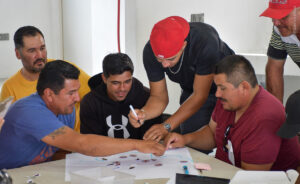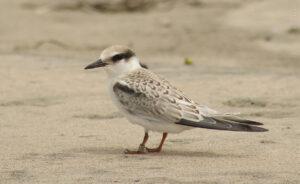Cabo Pulmo National Park has the only coral reef ecosystem in the Gulf of California. Due to its geographical location, it is the most northern coral reef in the Eastern Pacific, as well as one of the longest-lived in the American Pacific with an estimated age of 20,000 years. More than 7,100 hectares of its coral reef are located in the region known as East Cape, in the municipality of Los Cabos.
Because of its ecological relevance, in 1995 it was declared a marine protected area to preserve the ecosystem and its wildlife. Subsequently, in 2008 it was included in the list of Ramsar Sites, featuring the most important wetlands and coastal ecosystems in the world.
The ban on commercial fishing in Cabo Pulmo and zoning of no-sport fishing areas resulted from collaboration between the national park, local population, civil organizations, and the government. This is of great importance, together with fisheries management and constant efforts with authorities to prevent this marvelous natural site from being threatened.
For all these reasons, at Pronatura Noroeste we work to encourage sustainable tourism in Cabo Pulmo. After a lot of efforts and working closely with the residents, we have managed to get some families that used to practice harmful fishing techniques, to change their activity and become tourism service providers instead. In addition to providing a family livelihood, their new activity strengthens a sense of identity and belonging to the environment.
One of our most important tasks in Cabo Pulmo National Park is to establish the Cabo Pulmo and East Cape Environmental Education Campus. The educational campus allows us to disseminate technical-scientific information for conservation and the care of the national park. This is carried out in alliance with the Baja Coastal Institute and the National Commission of Natural Protected Areas (CONANP).
Within this project is the Visitor Assistance and Nature Interpretation Center, as well as the Cabo Pulmo Learning Center and a public amphitheater. Educational and tourism-oriented services are provided here, as well as cultural, recreational, and citizen science activities. In its early years, the campus reached more than 11,000 tourists, as well as hundreds of residents.
Regarding the biodiversity of Cabo Pulmo, it is worth mentioning the hermatypic corals playing a primary role in the structure and function of the reef. Bird species include the Osprey (Pandion haliaetus), the Yellow-legged Gull (Larus livens), which is endemic to the Gulf of California; the Brown Gull (Larus hermanni), the Lesser Black-backed Gull (Sterna antillarum) and the Brown Pelican (Pelecanus occidentalis), as well as some herons and sandpipers. Among the reef fish are the Red Snapper (Lutjanus colorado) and the Old Rainbow Runner (Thalassoma lucasanum), among many others.
Some marine mammals are also present, such as the Sea Lion (Zalophus californianus), the Bottlenose Dolphin (Tursiops truncatus) and the Spinner Dolphin (Stenella longirostris). Cabo Pulmo is also home to endangered sea turtles, such as the Olive Ridley Sea Turtle (Lepidochelys olivacea) and the Olive Ridley Sea Turtle (Chelonia mydas). In winter, migratory cetaceans such as the Humpback Whale (Megaptera novaeangliae), the Fin Whale (Balaenoptera physalus) and the Bryde’s Whale (Balaenoptera edeni) appear in these waters.
Join us in the fascinating work of conservation in Cabo Pulmo National Park.
















